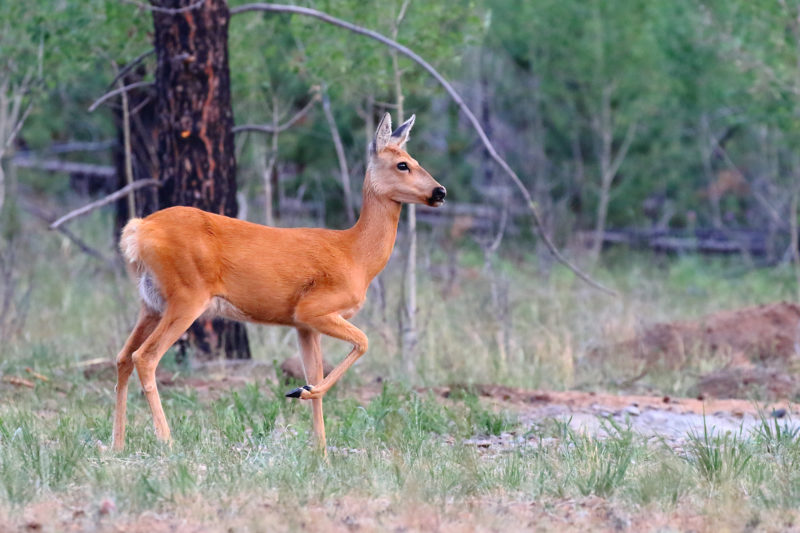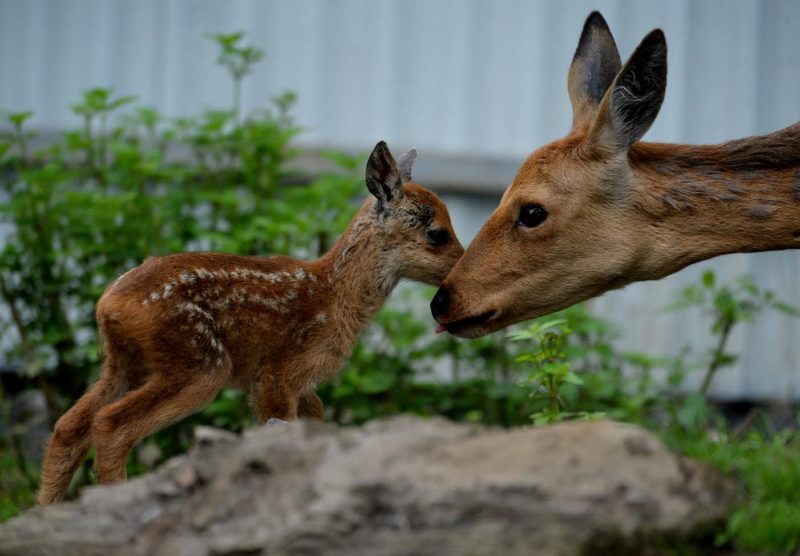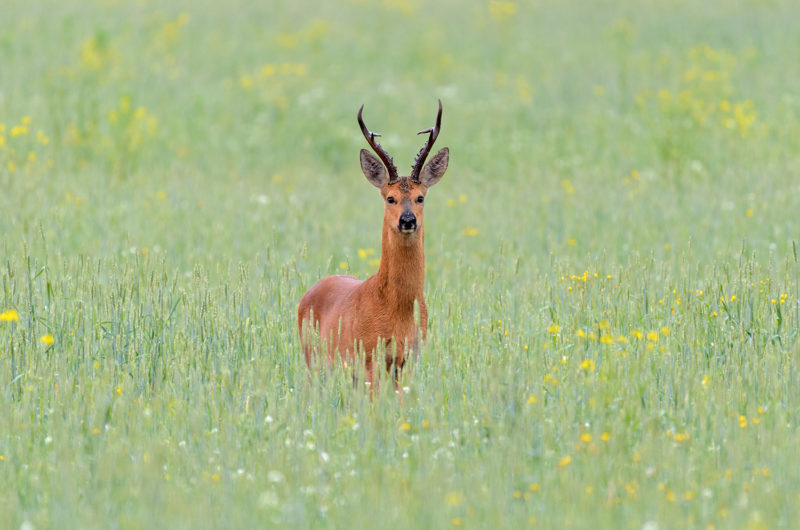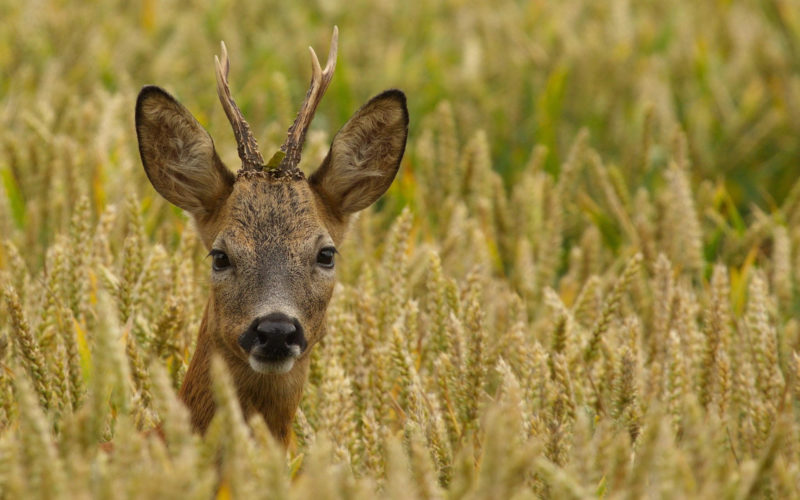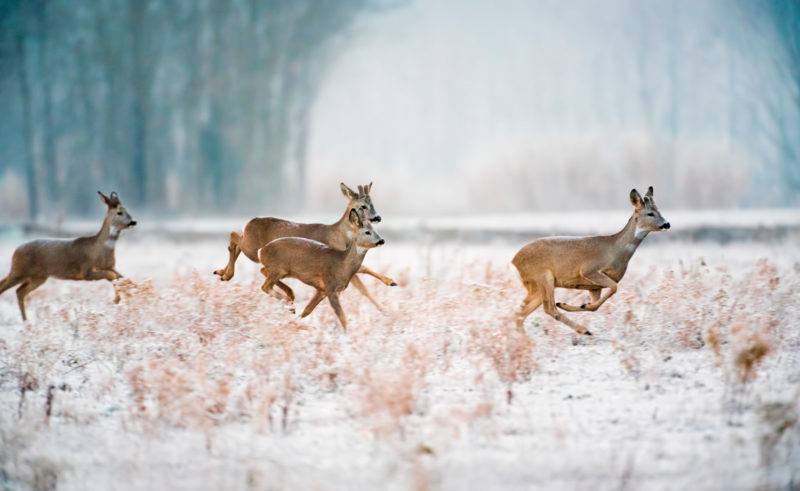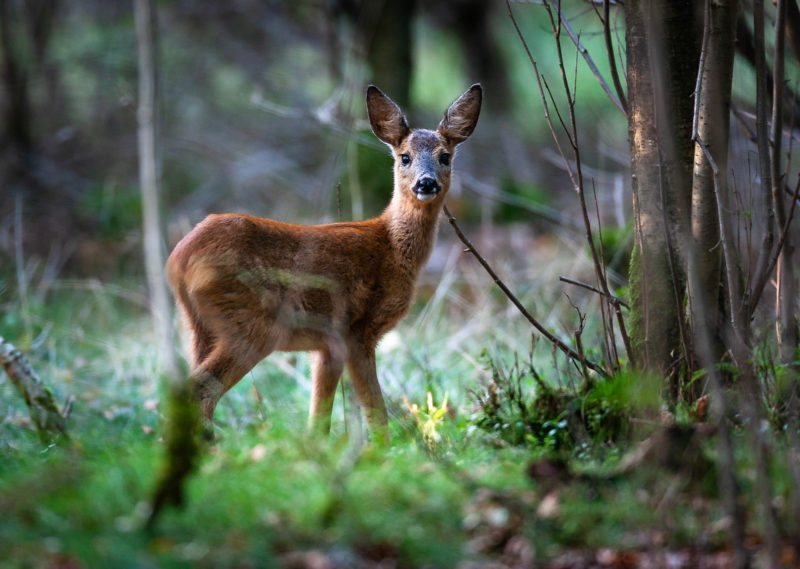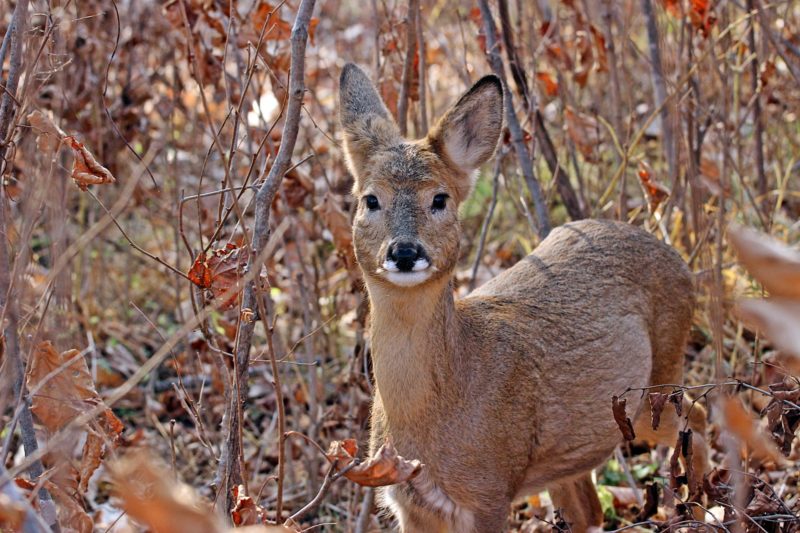An interesting artiodactyl - Siberian roe deer (capreolus pygargus) lives in the forest-steppes of Siberia. This graceful representative of the deer family is distinguished by special habits and lifestyle. You can learn more about this type from the material presented.
Material Content:
Description of Siberian Roe Deer Features
Roe deer is a very elegant deer, which is nice to see. It may differ slightly in the color of the coat, which depends on the region of habitat, but the animal is always characterized by a dark or light ocher color. The maximum length of the male’s body is one and a half meters, the height at the withers is about a meter, and the females are slightly smaller. The body weight of Siberian roe deer is from 30 to 50 kg.
Type Description:
- the muzzle is elongated, a light mark is noticeable on the nose;
- head shortened, tapering to the nose;
- ears are oblong, pointed at the ends;
- tail rudimentary, almost imperceptible;
- eyes are big;
- front legs slightly shorter than hind legs;
- hooves are narrow and short;
- the neck is long.
Males have lyre-branched branched horns, which are dumped in December, and again grow in the spring. In young yearlings, horns grow from 4 months - at first they are sharp without processes, and fully develop only by 3 years. The color of the coat of newborn babies is spotty with rounded dark spots located in 4 rows, and not in 3, as in the European species.
These small artiodactyls are somewhat similar to goats. Therefore, people and even among hunters call them wild goats, which, from the point of view of systematics, is wrong. They differ from European ones in larger body sizes, red, and not gray in the summer.The peri-tail mirror (caudal disk) is white in winter, and in summer it becomes an inconspicuous red tint.
Habitat
For the herd, when choosing a habitat in winter, the depth of snow cover is important. Although artiodactyls are adapted for snowy, cold winters, snowdrifts above 50 cm and slippery snowy snowstorms pose a threat to survival.
The range of Siberian roe deer includes forests, tall grass meadows and forest-steppes. Steppe populations do fine without woody vegetation, eating grass. In spacious meadows, where there is no shelter, herds do not settle even with an abundance of lush grass.
Siberian roe deer lives in the north of Mongolia and the west of China, as well as in Russia (the Urals, the south of the Far East, Siberia). The animal was brought intentionally to the Caucasian hunting farms, where it reproduces quite successfully.
Reproduction and longevity
Roe deer have a very interesting, unique for ungulates life story, starting with the rutting time of each individual, and continuing with the subsequent pregnancy. Their main race takes place in the middle of summer. Those females that are not fertilized, but are of mature age, participate in the repeated mating season. They can be covered even in late autumn.
Females that are fertilized in the summer have a latent pregnancy. A nascent embryo stops developing for 4 months. The pregnancy period itself begins in winter, in January. At this time, roe deer behave cautiously, try not to jump high and run less. Due to the natural “postponement” of embryonic development, offspring are born in a warm season, favorable for babies. The total duration of pregnancy is about 300 days, and during fertilization in late autumn, only 5 months.
Roe deer or, as they are called, kids, are born in the spring. They are spotty in color. In the first weeks after birth, the cubs lie hiding in the grass, they are difficult to notice because they are hiding. Mom herself comes to her cubs and feeds with milk. Then they get up and begin to move with the rest of the herd. By the beginning of the summer rut, the young generation is becoming completely independent. For other types of deer, this behavior of the offspring is not typical: a newborn lamb begins to follow its mother from the first day of birth.
In the first 20 days, roe deer feeds the cubs up to 9 times a day, its milk is 3 times fatter and more nutritious than cow's. Usually there are 2 kid in the litter, less often one or three. When the babies turn 2 months old, they already eat fresh grass, and they get their mother’s milk twice a day. Roe deer lactation ends in August or October.
The puberty of females occurs in the first year of life, and offspring appears at 2 years of age. Males have been participating in breeding since 3 years. The life expectancy of artiodactyls in nature is about 10 years, and in captivity 25-year-old old-timers are found.
Roe deer food
In summer, the animal enjoys plenty of young tree shoots, herbaceous plants, edible forest fruits, mushrooms and berries. In winter, it eats the buds of trees and bushes, actively digs snow with hoofs, picks up fallen leaves, last year's withered and frozen fruits, acorns, nuts.
Roe habits change throughout the year. In winter, she is active at any time of the day, getting her own food. In summer, in intense heat, most often relaxes in tall grass or shrubs. Goes to open pasture places early in the morning or late in the evening.
Forest roe deer willingly consume tree species - aspen, beech, willow, oak, linden, birch, etc. Field populations prefer various herbs and cereals, like fireweed, blood chowder, cow parsnip, sorrel, water calamus and white wingnings. Artiodactyls eat forest apples, pears, sea buckthorn, mountain ash, rose hips, lingonberries, nuts, but such food does not exceed 5% of the total diet. To replenish mineral substances, animals go to salt licks or drink water from mineral springs.In winter, to quench their thirst, they eat snow.
Natural enemies
Most large and medium-sized predators prey on the deer family. Wolves, stray dogs and lynxes are actively pursuing young and adult individuals - for them this is a darling. Raccoon dogs, badgers, foxes, kites, martens destroy small roe deer.
In winter, not only lynxes and wolves threaten populations, but also hunger. Young and weakened animals often die from a lack of food. If a lot of snow falls, they can eat up the bark from the trees and eat needles, but they do it very reluctantly.
Fleeing from the pursuit of predators, roe deer can develop a running speed of up to 60 km / h, jumping up to 2 m in height and up to 7 m in length. But the maximum speed does not last long. In open areas, a maximum of 400 m is run, and in the forest even less - up to 100 m. Then it begins to make circles, confusing the predator.
Social relations in the herd
It is interesting to watch a herd of roe deer. The movement of animals is very similar to the running of hares. On their hind legs, they jump above the willow, while simultaneously inspecting the surroundings, observing whether there is any danger nearby. Herds of roe deer are different in number - from ten to hundreds of goals. Small groups graze in forest lands, more numerous - in meadows and fields.
The voice of the roe is of great importance in social life.
It can make various sounds depending on the situation:
- squeaks or whistles, expressing anxiety, or calling to himself (usually the roe deer communicate with their mother);
- bows “byau-byau,” if the adult is alarmed;
- moaning or wheezing an animal that fell into the claws of a predator or was injured;
- hisses, being in an excited or aggressive state.
Little roe deer can only squeak. In addition to sound signals, visuals are important. Sensing danger, the animal freezes in a motionless position, which serves as a warning to the whole herd.
In the summer, they lead a solitary or family lifestyle. Females with offspring and males disperse in their territories. In winter, animals come together in herds, wander together in search of food. The dominant role is played by adult female mothers, followed by young growth and one-year-old males, who migrated to other lands in the summer. Adult males, dropping horns, rarely join the herd, even in winter they prefer a solitary lifestyle.
In March, winter groups begin to gradually disintegrate. Since February, old males have been separated from them. The longest, almost until May, are females with a one-year-old young. When the time comes for calving, they occupy their patrimonial plots and drive away other roe deer from there. During this period they become very aggressive, trying to ensure survival and safety for future offspring. Only in October, when the kids are growing up, roe deer become calm, groups begin to gather for winter migration in search of food.
Siberian Roe Deer and Red Book
In most regions of Russia, the number of Siberian roe deer is small. Herd migration takes place in the same places that are well known to poachers. The species is listed in the regional Red Book of the Tomsk region, as well as the Krasnodar Territory, as steadily declining.
To protect the species, hunting for Siberian roe deer is prohibited all year round. In nature reserves, animals are not only protected, but also fed, provided with medical care, and regulated by the number of wolves and stray dogs.
Interesting Facts
In summer, roe deer prefer to feed at night or early in the morning, which is associated with the activity of blood-sucking insects. At night, the cloven-hoofed eyes glow with a reddish-yellow light.
You can guess the whereabouts of animals on the trail on the ground. They leave a quiet heart-shaped track with a length of 4.5 to 6 cm at a quiet speed. On moist ground or snow, the footprint is bifurcated at the top, the outlines of two outer hooves are visible. A male Siberian roe deer actively marks its territory in spring and summer.On the horns and hooves he has special glands.
Rare Siberian artiodactyls are bred in captivity, then released into nature. There are tame individuals in the pens. If you feed roe deer from a bottle from 3 days of age, then they are not afraid of humans and are easily allowed to approach them.
Siberian roe deer is a beautiful and rare animal that needs protection. Hunting for it is prohibited by law.


